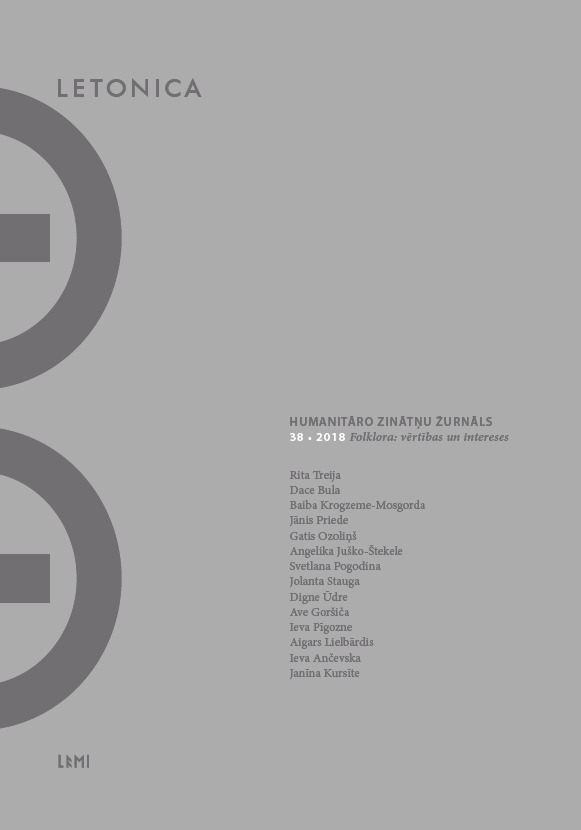Par rituālo draudēšanu
On Ritualistic Threats
Author(s): Janīna KursīteSubject(s): Museology & Heritage Studies, Customs / Folklore, Social psychology and group interaction, Social Norms / Social Control
Published by: Latvijas Universitātes Literatūras, folkloras un mākslas institūts
Keywords: folksongs; ritualistic threats; Midsummer and Christmas; weddings; food and drink
Summary/Abstract: The corpus of folksongs contains at least over one hundred patterns, which can be regarded as ritualistic threats. Ritualistic threats mainly were made in celebrations and feasts, most often – in the summer and the winter solstice, as well as weddings. The threateners, as already mentioned, mostly were “strangers”, and the hosts were requested to give them treats. In Midsummer celebrations the threateners were called the Midsummer’s children, who came to demand beer from the host and cheese, milk from the hostess. If the treat was not given, the singer alone or together with other boys threatened to tread out the host’s barley field. The threats usually took an evil and destructive verbal form. When turning to the hostess, the threateners menaced her to destroy the cattle, namely, the cows belonging to the host family. At Christmas, the threateners were no longer called the Midsummer’s children, but mummers. The addressees of the threats were similar to that of the Midsummer, namely, the hosts. The mummers usually threatened to break the established order of family home, regardless of the generous meal provided by the hosts. The mummers menaced the hosts’ daughters with sexual abuse, and what is even more incomprehensible and weird – the hosts’ sons were threatened by mummers’ daughters. Obviously, these threats were made to awaken libido. The awakening in nature also meant the awakening of the human body. If in the summer and winter solstice the ritualistic threats were linked to the destruction of fields, livestock and people, then in weddings the threats were made mainly in the form of possible sexual aggression. The redirection of aggression works best, if it has a ritualistic scenario, developed by previous generations. The best scenario is based not on physical force or weapons, but on “a sharp tongue” – mutual chaffing in songs. The ritual aggression, which is reflected in our folksongs, is a vivid example of how coexistence was possible without doing harm to each other – neighbours or villages. At the same time, it is an example of how ritualistic threats can be transposed not only to peaceful cohabitation, but also to friendship and love.
Journal: Letonica
- Issue Year: 2018
- Issue No: 38
- Page Range: 210-222
- Page Count: 13
- Language: Latvian

